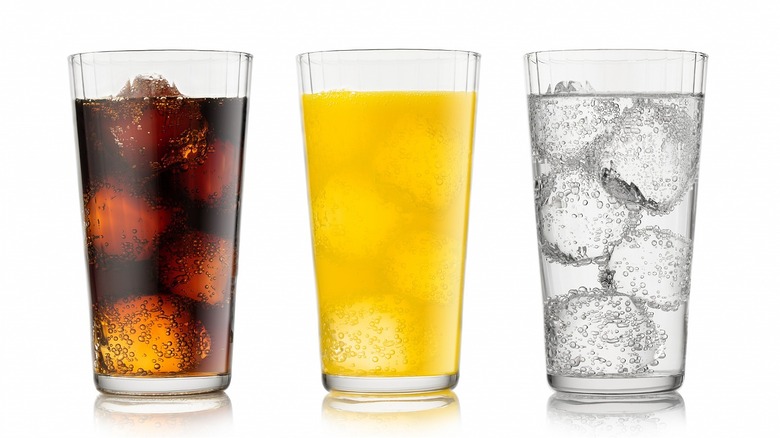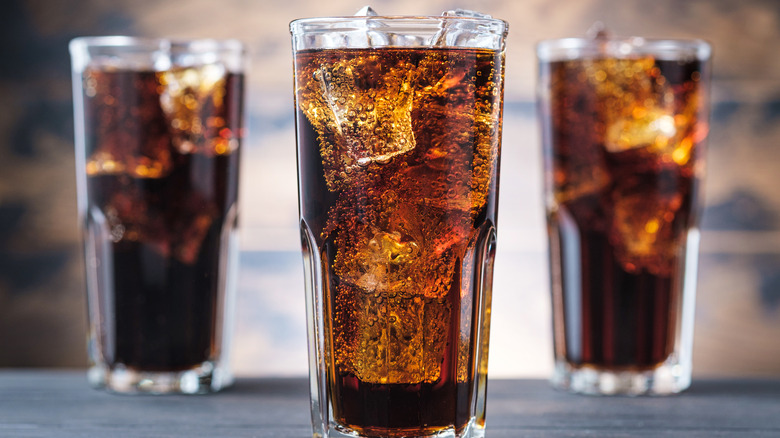What Actually Makes A Soda A Soda?
Whether you call it soda, pop, or coke, it's thirst-quenching, fizzy, and sweet. Soft drinks have been around longer than Pepsi and Coca-Cola's marketing one-upmanship. Carbonated water was introduced in England in 1767 and then bottled and sold in the mid-1800s. The general term for carbonated drinks is "soft drink" to distinguish from "hard drinks," which generally have alcohol, according to Science Direct. Over the years, there have been regional differences in how people refer to carbonated beverages such as pop or just soda.
To make the fizz, carbon dioxide is added to the water under pressure, which turns it into carbonic acid and also gives you a tingle on your tongue. Carbonic acid is good for flavoring and preservation, but it needs to be balanced. Soft drink producers add sodium salts to reduce acidity, which also enhances the sweetness. People thought the bubbles came from the added sodium bicarbonate (remember the vinegar and baking soda experiment from elementary school?), so now we have "soda." It was only a matter of time before Dr. John Stith Pemberton started marketing his miracle syrup in Atlanta, Georgia where it was mixed with carbonated water to give us Coca-Cola.
Soda still isn't that great for you, but there are alternatives
While soda is delicious and a great mixer for endless cocktails, it does affect your health if consumed every day. An experiment performed in the U.K. found that those who drank soft drinks had higher levels of the hunger hormone ghrelin – about 50% higher than those who had non-carbonated drinks, including carbonated water, per BBC. The amount of sugar in soda causes your blood sugar to rise and fall quickly, which can make you feel hungrier sooner and eat more.
If you can't give up the fizz or hate plain water, you can consider other sources, like naturally carbonated mineral water from a spring. The higher carbon dioxide levels found in some spring water help it absorb higher levels of minerals. According to WebMD, drinking at least one liter of mineral water per day lowered the LDL cholesterol (the bad kind) and raised HDL cholesterol (the good kind) in older women. It's also been shown to lower blood pressure and relieve constipation.
So the next time you're craving a bit of the fizzy stuff, enjoy the bubbles but maybe drink some fizzy water after to sate your craving.

